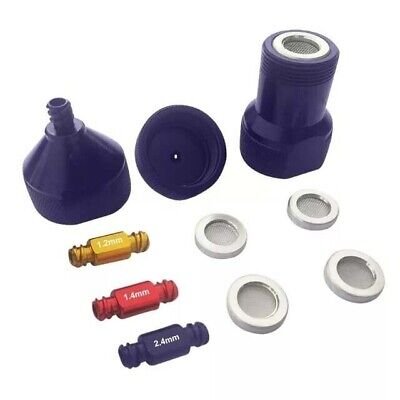Nano Fat Transfer Set: The Ultimate Guide to Fat Grafting
Regarding aesthetic procedures, fat transfer has gained significant popularity over the years. Among the various fat transfer methods, nano fat transfer stands out as one of the most advanced and effective options. This innovative technique involves using a nano fat transfer set, which is designed to enhance the precision and success of fat grafting procedures.
In this comprehensive guide, we’ll delve into the world of nano fat transfer sets, exploring their benefits, components, and why they are considered a breakthrough in cosmetic and reconstructive surgery.
What is Nano Fat Transfer?
Nano-fat transfer is a sophisticated fat grafting technique that involves using purified fat cells, which are then injected into the desired areas to restore volume, smooth out wrinkles, or enhance contour. This method is highly effective in facial rejuvenation, breast augmentation, and even scar revision procedures.
The nano fat transfer set is a specialized kit that contains all the tools necessary for the procedure, including advanced cannulas and syringes. It is designed to handle fat cells delicately, ensuring that they maintain their viability for successful transfer and integration.
The Key Components of a Nano Fat Transfer Set
A typical nano fat transfer set includes a variety of tools to ensure optimal fat extraction, processing, and injection. Let’s explore the essential components:
1. Fat Harvesting Cannulas
These specialized cannulas are used to extract fat from a donor area, typically the abdomen or thighs. Fat harvesting cannulas in the nano fat transfer set are designed to ensure that the fat cells are collected without damage, which is crucial for maintaining their quality.
2. Fat Injection Cannulas
After the fat has been processed and purified, it is ready to be injected into the target area using fat injection cannulas. These cannulas are fine-tipped, ensuring minimal trauma to the tissue during the injection process, which leads to faster recovery times and more natural-looking results.
3. Syringes and Adapters
The syringe and adapters in the nano fat transfer set allow for easy and precise administration of the fat. The components are designed to ensure the correct amount of fat is injected at the right depth, leading to optimal outcomes.
4. Fat Processing Equipment
In some advanced nano-fat transfer kits, there may be additional equipment for processing the fat. This includes filters and centrifuges that help separate viable fat cells from non-viable ones, ensuring that only the best fat cells are used for grafting.
Benefits of Using a Nano Fat Transfer Set
1. Enhanced Precision
The design of the nano fat transfer set, particularly the fat injection cannulas, allows for greater precision when injecting fat. This results in smoother, more natural-looking outcomes and minimizes the risk of complications.
2. Minimal Downtime
Due to the gentle and precise nature of nano fat transfer, patients experience less trauma to the tissue. This leads to quicker recovery times and a reduced risk of bruising or swelling.
3. High Success Rate
Because the fat cells are treated delicately during extraction, processing, and injection, they are more likely to survive the transfer. This increases the success rate of the procedure, making it a highly reliable method for patients seeking fat grafting.
4. Versatility
Nano fat transfer sets are versatile and can be used for a wide range of aesthetic procedures. Whether you’re looking for facial rejuvenation, breast augmentation, or a body contouring procedure, a nano fat transfer set can help achieve natural and long-lasting results.
How Does Nano Fat Transfer Work?
The nano fat transfer process begins with the extraction of fat cells from a donor area. The harvested fat is then purified using advanced techniques to remove any impurities. After purification, the fat cells are injected into the target area using specialized fat injection cannulas.
One of the key steps in the process is the preparation of the fat, which ensures that only the healthiest cells are used. This is essential for maximizing the survival rate of the fat graft.
Step-by-Step Process
- Fat Harvesting: Using a fat harvesting cannula, the surgeon extracts fat from an area with a sufficient fat supply.
- Fat Purification: The fat is processed using a centrifuge or filtration system to remove excess fluid, blood, and damaged cells.
- Fat Injection: The purified fat is injected into the desired area using fine fat injection cannulas, ensuring an even distribution of the fat cells.
- Post-Procedure Care: Patients may experience mild swelling or bruising, but recovery time is minimal. Post-procedure care typically includes compression garments and instructions for at-home care.
Explore more latest details about the Toledo V Dissecting Fat Injection Cannula
Nano Fat Transfer vs. Traditional Fat Grafting
While both traditional fat grafting and nano-fat transfer use the same basic principle of transferring fat to a new location, nano-fat transfer has several advantages:
- Smaller Cannulas: Nano fat transfer sets use ultra-fine cannulas for injections, leading to more precise fat placement and less tissue trauma.
- Higher Viability of Fat Cells: The gentle processing of the fat cells in the nano fat transfer process increases their survival rate compared to traditional methods.
- Less Downtime: Due to the minimally invasive nature of nano fat transfer, patients experience faster healing times compared to traditional fat grafting methods.
The Role of Fat Injection Cannulas in Nano Fat Transfer
Fat injection cannulas are the heart of any successful nano fat transfer procedure. Their role in ensuring a smooth, even injection of fat cannot be overstated. These cannulas are designed to handle fat delicately, ensuring that the fat cells are deposited exactly where needed without causing damage to the surrounding tissues.
There are various sizes and types of fat injection cannulas, and choosing the right one for each procedure is crucial for achieving the best results. Surgeons may select a cannula based on the area being treated, the amount of fat being injected, and the desired outcome.
Fat Grafting Set: An Essential Tool for Surgeons
A fat grafting set is an all-in-one solution for surgeons performing fat transfer procedures. The set includes all the necessary tools for fat extraction, purification, and injection, ensuring that the procedure is carried out efficiently and safely. A well-designed fat grafting set makes the entire process smoother and more predictable, leading to better results for patients.
Conclusion
The nano fat transfer set is a revolutionary tool in the world of fat grafting. It offers a more precise, effective, and minimally invasive solution for patients looking to restore volume, enhance contours, or rejuvenate their appearance. By utilizing advanced fat injection cannulas and fat harvesting tools, surgeons can ensure that the fat cells remain viable, increasing the chances of success for the procedure.
Whether you’re a patient considering fat grafting or a surgeon looking to enhance your toolkit, understanding the benefits and components of a nano fat transfer set is crucial for achieving optimal results.
Frequently Asked Questions (FAQs)
- What is the difference between nano fat transfer and traditional fat grafting?
Nano-fat transfer involves using fine cannulas and advanced techniques to harvest, process, and inject fat cells. This results in higher viability of fat cells and quicker recovery times compared to traditional fat grafting.
- Can I use a nano fat transfer set for facial rejuvenation?
Yes, nano fat transfer is commonly used for facial rejuvenation, including the restoration of volume in the cheeks, under-eye area, and temples.
- How long does it take to recover from a nano fat transfer procedure?
Most patients experience minimal downtime, with recovery typically taking around 1-2 weeks. Swelling and bruising are common but usually subside quickly.
- Is the fat permanent after the transfer?
While some of the transferred fat may be reabsorbed by the body, most of the fat survives and provides long-lasting results.
- Are there any risks associated with nanofat transfer?
As with any surgical procedure, there are risks such as infection, asymmetry, or fat absorption. However, these risks are minimized with a skilled surgeon and proper aftercare.




